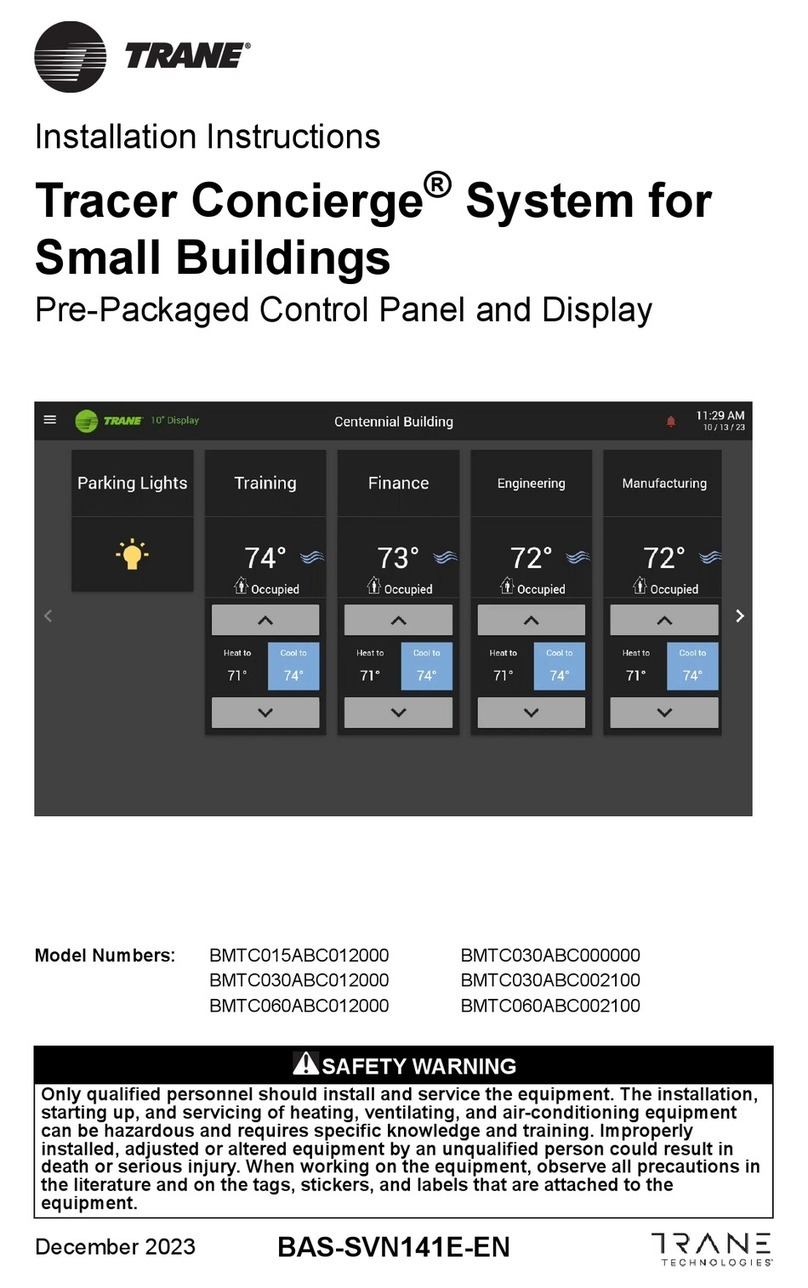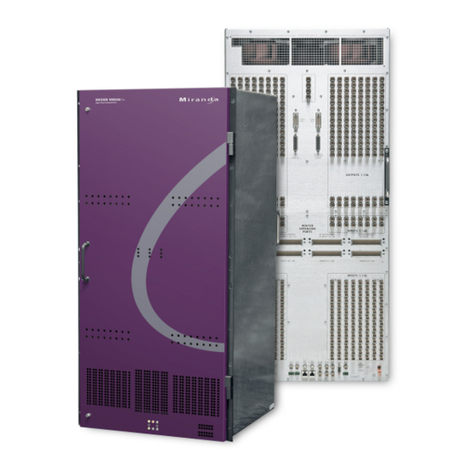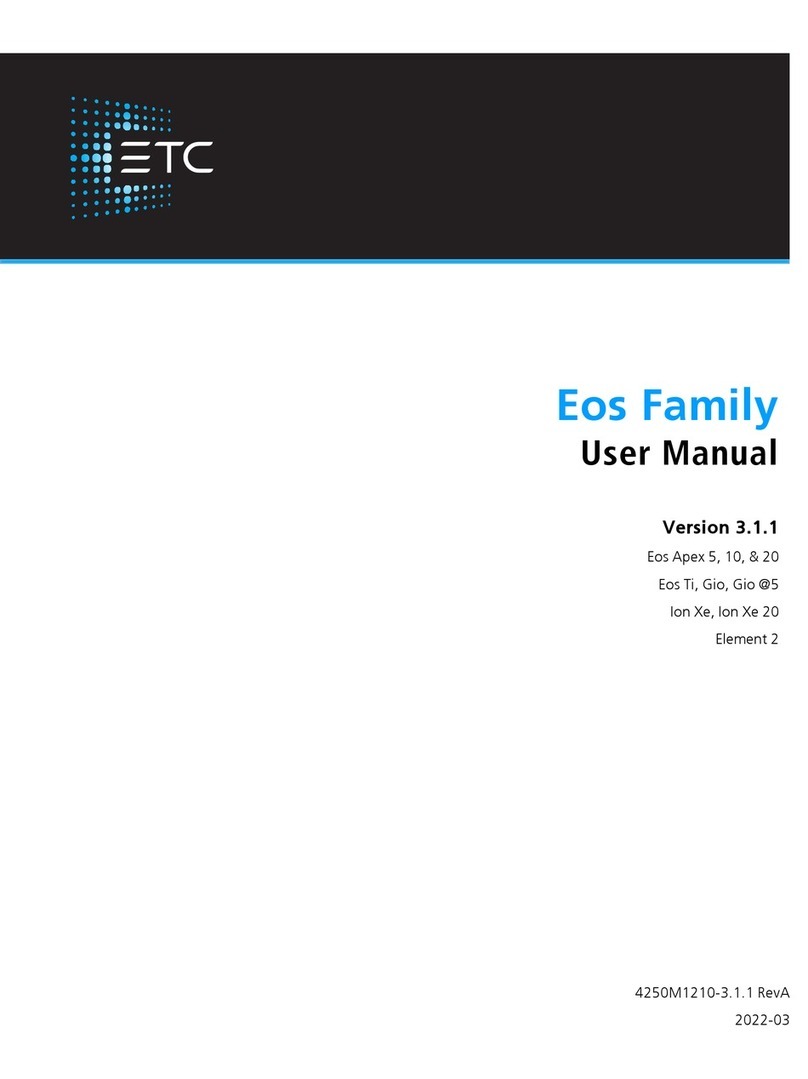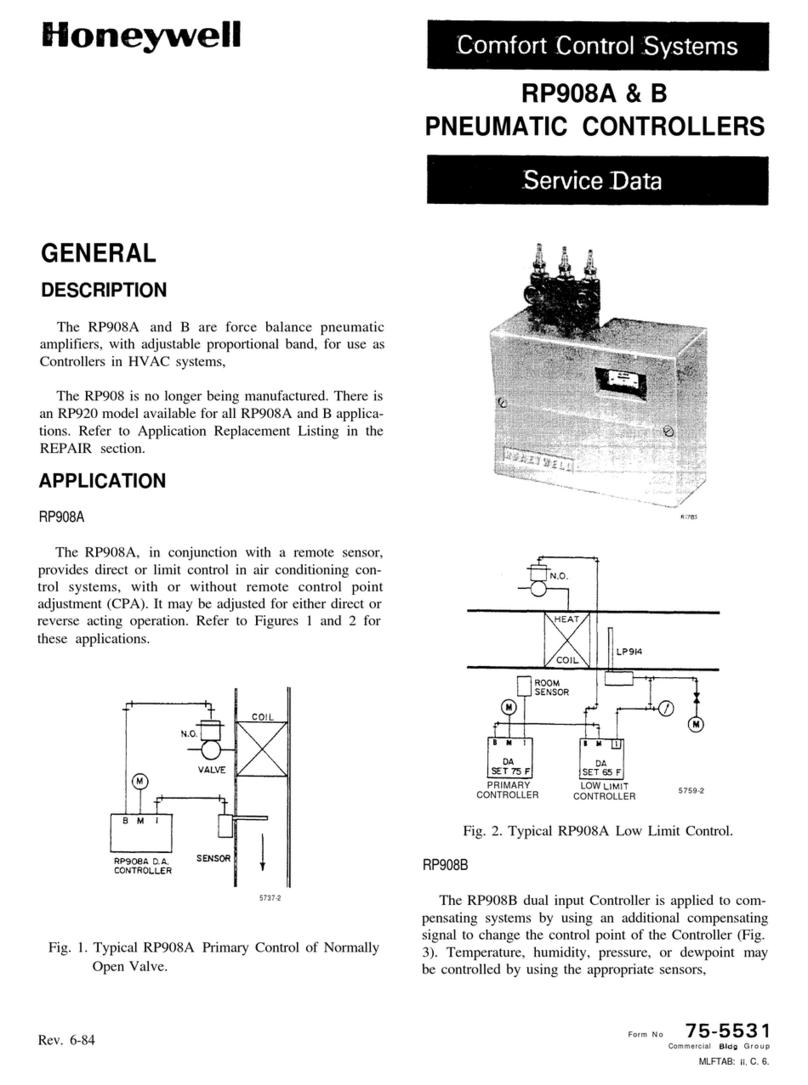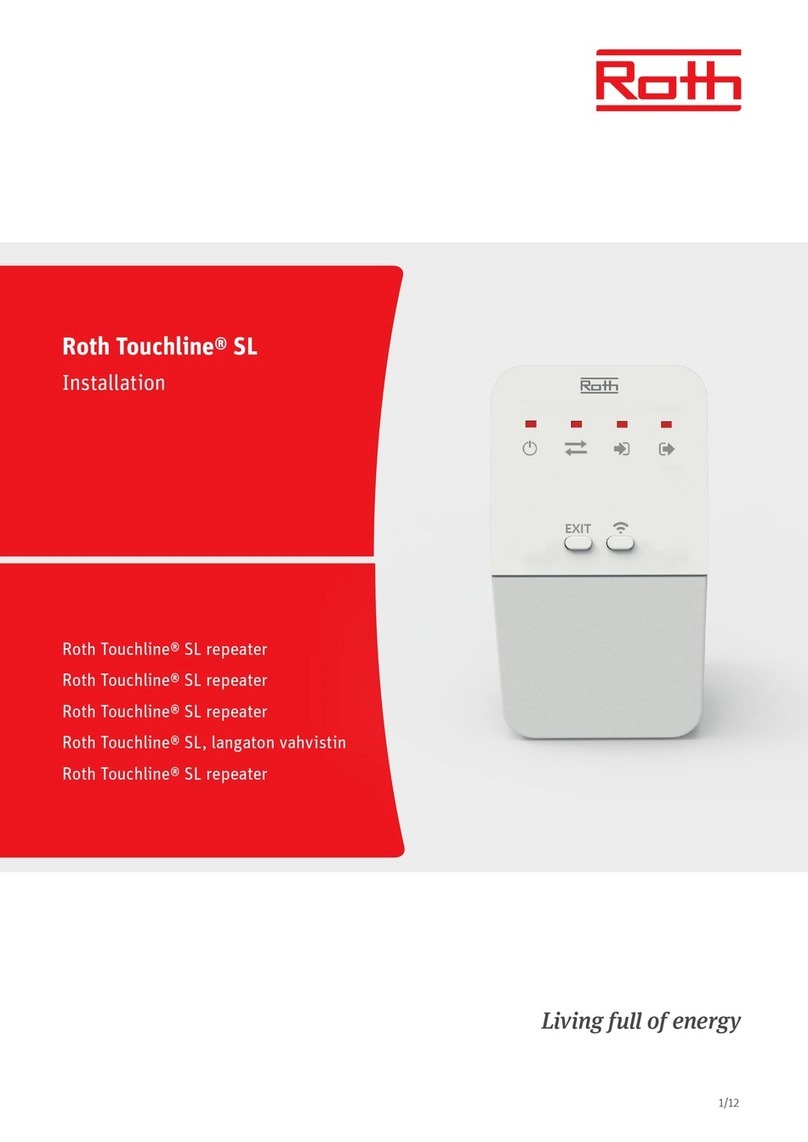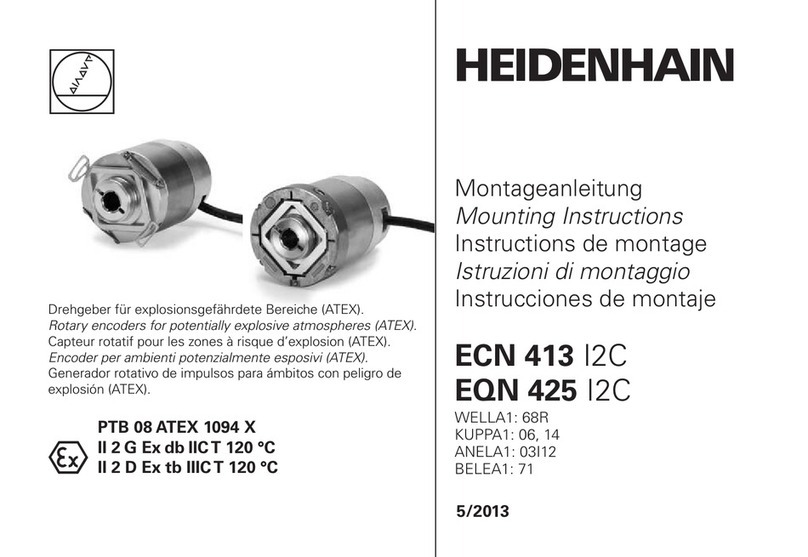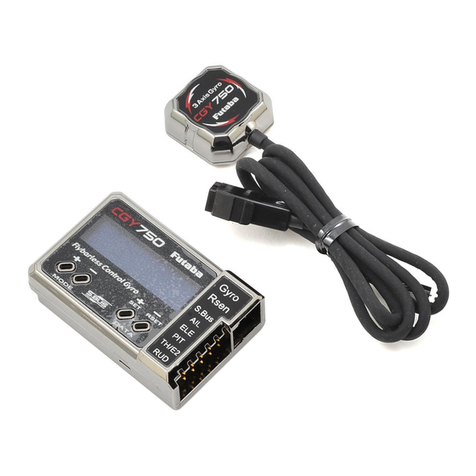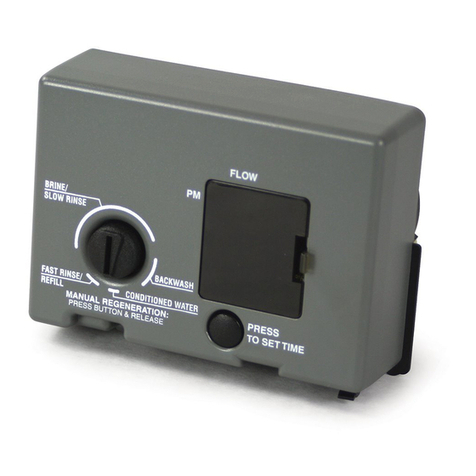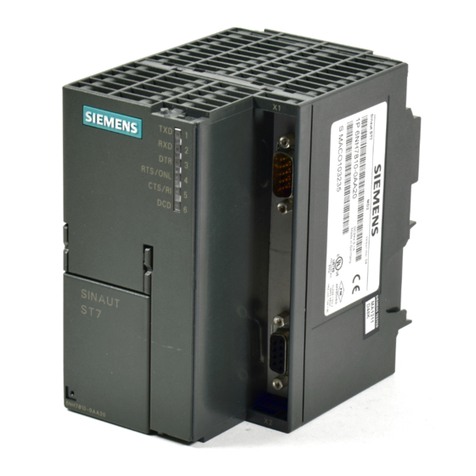StarLogixs CybaMICRO 2011 User manual

R
ELECTRONIC CONTROL SYSTEM
Page 1
CybaMICRO 2011 Model

IMPORTANT SAFETY NOTICE
!
Your StarLogixs CybaMICRO Controller provides vital safety features in your baler. If the
Controller has been damaged always have it checked by a person qualified for electrical
maintenance before operating the baler.
Check all power leads and plugs for damage. If damage is found switch off and disconnect
from supply, and have repaired by a person qualified for electrical maintenance.
The ‘door closed’ sensors are critical to the safe operation of the baler. If they are dam-
aged or the mechanism driving them is damaged never attempt to use the baler before
calling an approved service agent.
The Controller has lethal voltages inside.
NEVER OPEN OR ATTEMPT TO SERVICE.
NEVER REMOVE OR ATTEMPT TO REMOVE THE FRONT COVER.
NOUSER SERVICEABLE PARTS OR ADJUSTMENTS INSIDE.
DONOT DIRECTLY EXPOSE CONTROLLER TO RAIN OR HIGH PRESSURE WATER JETS.
SHOULD YOU LEAVE YOUR BALER UNATTENDED FOR APERIOD OF TIME, IT IS STRONGLY REC-
OMMENDED THAT YOU SWITCH THE POWER OFF AND REMOVE THE KEY.
ANY UN-AUTHORISED ACCESS INTO THE CONTROLLER WILL VOID WARRANTY.
Note to Serviceman
Always obtain the latest version of service manual from
www.starlogixs.com.au before attempting to service the control system.
Do not substitute items noted in the service manual as critical components in the safety
systems.
Declaration of Conformity
The CybaMICRO Controller is designed to control baling presses and conforms with the follow-
ing standards:
AS/NZS20641: 1997
(EC/CISPR11: 1992)
And is manufactured under Australian Communications Authority C-Tick approval number.
The safety door switches are monitored and have in-built redundancy.
Machine Model: _______________________________
Serial Number: ________________________________
N10728
Page 2

Contents
1.0 Suggested Conditions of Use P4
1.1 Qualified Operator P4
1.2 Description of the Controller P4
1.3 Situation of Normality P4
1.4 Protection P5
1.5 Installation—Qualified Person P5
1.6 Electrical Connection P5
1.7 Control of Protection Devices P5
2.0 Basic Controller Function P6
2.1 Operation of the Pressure Switch and Travel Switch P6
2.2 Full Bale Detection P7
2.3 Door Switches P8
2.4 Tilt Switch P8
3.0 CybaMICRO Display P9
3.1 Status Messages P9
4.0 Location of Internal Components P10
5.0 Parts List P11
6.0 Fault Messages P12
6.1 Selected Fault Symptoms and Remedies P12
7.0 Motor Reversing Plug System P13
8.0 Location of Controls P14
9.0 Main Wiring Harness P15
10.0 Warranty P16
10.1 Copyright P16
Page 3

1.0. Suggested Conditions of Use
1.1. Qualified Operators
Operator:
Qualified to operate the control unit in all normal day to day functions of the
baler.
Person Qualified for Electrical Maintenance
Must be trained by the manufacturer and hold appropriate trade qualifications
for the service of mains electrical equipment and safety related electronic equipment.
Safety Manager:
The Safety Manager is the person in charge, liable for protection and prevention
from working risks. The safety manager will make sure that all persons operating with
the machine receives all instructions concerning their jobs, as herewith contained, in-
cluding and beginning from installation and machine starting.
Manufacturer:
It is necessary to contact StarLogixs for any operation not expressly covered in the
present manual and assigned to any of the professionally qualified operators as listed
above.
1.2. Description of the Controller
The CybaMICRO controller is an electronic industrial control system designed to pro-
vide control and safety features for bailing machines. The controller co-ordinates con-
trol of the baler electronic motor and hydraulic solenoid valves, whilst monitoring a
number of sensor devices to allow it to respond appropriately to pressing conditions in
the baler. In particular the controller monitors a dual safety door switch with a fully re-
dundant circuit that will detect a single failure in either the door switches or the monitor
circuit.
The controller houses mains voltage and should only be serviced by qualified persons.
It should be maintained in accordance with relevant electrical safety standards.
1.3. Situation of Normality
It is absolutely necessary that the controller is used in the conditions suggested by the
present manual of use and maintenance. It is not allowed to misuse the controller or
its safety devices nor to use the machine in abnormal conditions.
We wish to point out below some suggestions, to be carefully considered by the op-
erator in order to avoid abnormal conditions of use.
Do not operate the controller if it is not properly attached to the baler.
Do not operate the controller if door sensors, emergency stops or other electri-
cal components are damaged, or not functioning.
It is strictly prohibited that persons other than the operator approach the ma-
chine.
The controller shall not be installed and shall not operate in an explosive envi-
ronment.
The controller shall never be washed with jets of water or flammable liquids.
Cleaning and maintenance operations shall be performed by qualified persons.
The operator shall always perform periodical safety checks, as required by
safety rules.
The controller should be protected from direct exposure to rain and sunlight.
Page 4

1.4. Protection
Emergency stop immediately stops machine operation by disconnecting power supply
in the controller.
Door sensor open immediately holds all automatic operations and movement of the
baler pressing apparatus and stops the baler electric motor.
1.5. Installation—Qualified Person: Safety Manager
Before proceeding with the preparation of the machine for its installation and starting it
is necessary to make a careful visual inspection of the controller for damage that may
have occurred in transit. In particular check:
Door Switches
Emergency Stop
Mains Power Cable
Mains Plug
Controller Mounting
Controller Casing for damage
Signs of moisture ingress into Controller
1.6. Electrical Connection
Ensure that the power socket is correctly rated and is provided with an effective earth
before plugging the controller in.
1.7 Control of Protection Devices
Check that pressing emergency stop causes controller Power LED to go out and ma-
chine to immediately stop. Also check that opening top baler door causes Door Open to
be displayed in the System Monitor. The baler pressing apparatus should not move
when the door is open.
The operator shall not disable or attempt to disable any of the safety features of the
controller.
The Person Qualified for Electrical Maintenance shall not open the controller before
disconnecting from the mains supply. Maintenance personnel should at all times be in
control of the mains plug when working inside the controller.
At the completion of any work they should locate, assemble and check that all safety
systems are functioning correctly.
The Safety Manager shall make sure the Operator and Persons Qualified for Electrical
Maintenance have received all necessary information according to the present manual
and electrical service manuals as maybe appropriate, and in particular will make sure
that all safety systems and protection devices are correctly assembled and working and
also that they have not been mishandled.
Page 5

2.1 Operation of the Pressure Switch and Travel Switch
The CybaMICRO controls the movement of the baler pressing apparatus by energizing
solenoid coils on a hydraulic valve. If the A solenoid is energised , the pressing appara-
tus will move in one direction, and if the B solenoid is energised the pressing apparatus
will move in the other direction (refer to baler manufacturers data for specific details.)
When both A and B solenoids are de-energised the pressing apparatus will not move.
The CybaMICRO controller is capable of monitoring a hydraulic pressure switch, and
a travel switch.
The travel switch will be arranged so a cam or striker that is mechanically linked to the
pressing apparatus will actuate and close the switch contacts at the mechanical travel
limits of the pressing apparatus. The CybaMICRO controller will monitor the travel limit
switch, and when its contacts close the hydraulic solenoid coil driving the pressing ap-
paratus will be de-energised.
The hydraulic pressure switch will monitor the oil pressure, and when that pressure
reaches a set-point (see baler manufacturers data), the pressure switch contacts will
close. The advantage of the travel switch is that it allows the end of travel of the press-
ing apparatus to be detected without generating high oil pressures and mechanical
forces.
2.0 Basic Controller Function
The emergency stop must be released and the key switch in the ON position for the
controller to be powered. Power LED should illuminate solidly, and display shows
StarLogixs on line 1 and ver:r1.0(11hk) on line 2 for 2 seconds. Then the display will
show XXXX Bales.
The CybaMICRO controller has only a single OPERATE button which changes func-
tion depending on the following conditions. When the power is initially switched on,
pressing the OPERATE button will cause the baler to retract. Also if a full bale condi-
tion is sensed the cycle will terminate with the baler pressing apparatus locked in the
compaction position. Pressing the OPERATE button in this case will also cause the
baler to react. All other situations will cause the baler to cycle when the OPERATE
button is pressed.
When the message Door Open is displayed all baler functions are suspended until the
door is shut. Pressing the OPERATE button will only cause a baler action when the
messages Ready to Press, Ready to Retract, Cardboard Full or Plastic Full are dis-
played on the system monitor.
The particular action the baler is currently performing is displayed on the system moni-
tor. That is, Retracting is displayed when the baler is retracting, and Pressing is dis-
played for the duration of the pressing cycle.
Note that the cycle consists of the baler pressing apparatus moving down in the com-
paction stroke, a short delay in the compaction position, then the baler pressing appa-
ratus moving back up to the starting position.
When a full bale condition is detected the Full LED will illuminate and the message
‘Cardboard Full’ or ’Plastic Full will be displayed on the SYSTEM MONITOR depend-
ing on which chamber is full. In both cases ’Tie Off Bale NOW’ will be displayed on the
second line of the SYSTEM MONITOR. The baler cycle will terminate with the press-
ing apparatus locked in the compaction position. This ensures the baler is in the cor-
rect position for tying-off the baler strings (see baler data for details). When the OPER-
ATE button is pressed the SYSTEM MONITOR will display Retracting and the baler
will retract. However the cardboard full bale condition can not be cleared until the bale
is removed from the chamber. No further cycling of the baler is possible until this is
done. Even switching off the power will not clear this state.
Page 6

2.2 Full Bale Detection
When the pressing apparatus is moved in the compression stroke, its end of travel
is detected by either the travel switch or the pressure switch (see Operation of the
Pressure Switch and Travel Switch). When the baler fills with material only the
pressure switch detects the end of the compression stroke, because the baler is
not capable of supplying sufficient force to drive to the end of its stroke.
In this situation the closing of the pressure switch before the travel switch closes on
the down stroke will be used to indicate Cardboard Full.
The full bale condition for the plastic chamber has a different sensing mechanism.
The side of the plastic chamber is provided with a small spring biased pressure
plate linked to a limit switch. When there is sufficient compaction force in the plastic
chamber, the pressure plate is moved outward and the limit switch actuated. This
is sensed by the controller to indicate Plastic Full.
The cardboard chamber is fitted with a twine sensor which allows the controller to
detect if the full bale has been removed. When the twine is tied off it resets the
twine sensor and resets the Cardboard Full condition.
The controller has the capability to monitor a similar sensor for the plastic chamber,
but this is not fitted. Consequently the Plastic Full condition is reset as soon as the
baler is retracted.
However, the travel switch can not eliminate the need for the hydraulic pressure
switch.
As the baler fills with material a point will be reached where the pressing force is
insufficient to cause the pressing apparatus to move to the ends of its stroke. Thus
the travel switch can not detect this condition, but the hydraulic pressure switch
can detect the oil reaching the set-point pressure, and then de-energise the sole-
noid and stop the pressing cycle (see description of full bale detection.)
If the travel switch were to fail the baler will still stop at both ends of its stroke be-
cause the pressure switch will close. However the machine will detect a Cardboard
Full condition at the bottom of each stroke.
If the hydraulic pressure switch were to fail when the travel switch was fitted, the
fault would only become evident when the baler pressing chamber was full of ma-
terial. In this condition there would not be sufficient force to cause the pressing ap-
paratus to travel to the end of its compression stroke, so the travel limit switch
would not operate, and the faulty hydraulic pressure switch would not work. The
message ‘Pressure Sw Open’ would appear.
Finally, if the travel switch contacts were jammed in the close position or the wiring
was shorted, the pressing apparatus would only cycle down (after the operate but-
ton was pressed) for about 3 seconds.
Page 7

2.3 Door Switches
The CybaMICRO controller includes a door switch monitoring system to enhance the
overall system safety. There is a door switch fitted to the cardboard chamber top
door, and a separate switch to the plastic chamber top door.
Two separate switches must be used for each door as shown in the figure below. If
one switch were to fail then the operation of the second switch would be sufficient to
indicate the failure in the first switch. The monitoring circuitry will then default to the
safe state, which is the Door Open. The monitoring system will also similarity detect
Fig 2: Door Switch Assembly Example
In this system Door 1 Limit Switch must close its contacts when the door is shut, and
Door 2 Limit Switch must open its contacts when the door is shut. Whenever the door
is changed from open to shut, or shut to open, the contacts in both switches must
change state. That is, when the door is opened Door 1 Limit Switch must open its con-
tacts, and Door 2 Limit Switch must close its contacts.
Any fault in the system will result in Door open being displayed in the system monitor.
The CybaMICRO models may also have an encoded magnetic door switch fitted. The
principle of operation is the same .
2.4 Tilt Switch
The CybaMICRO controller is designed to control a baler with dual hydraulic cylinders
that must remain synchronized in their stroke. Under certain conditions these cylinders
may loose their synchronization, and the tilt switch is fitted to the machine to indicate
this condition and prevent the machine from operating and causing mechanical dam-
age. If the message Tilt Fault appears when the power is switched on, then the cylin-
ders must be re-synchronized before the baler can be operated (call baler manufac-
turer for details).
Page 8

3.0 CybaMICRO Display
The CybaMICRO controller has a two line 16 character alphanumeric liquid
crystal display unit.
xxxxxxx
xxxxxxx
Line 1
Line 2
SYSTEM MONITOR
There are two classes of messages that are displayed. The first is status messages
during the normal operation of the controller, and the second is fault reporting mes-
sages.
3.1 Status Messages
ver:r1.0(11hk) indicates the code version in the controller (quote this when calling
for service).
1234 Bales baler count indicator displayed at power on for 2 seconds
Door Open Indicates the baler top door is open. If the door is closed, but this
message appears, there may be a fault with the door sensor
switches, wiring or the controller PCB. Before calling for service
open and close the baler door a couple of times and check if the
door open message remains when the door is shut.
Ready to Retract Indicates the baler is ready to retract when the OPERATE button
is pressed.
Ready to Press Indicates the baler is ready to perform a compaction cycle when
the OPERATE button is pressed.
Pressing Indicates the baler is performing a compaction cycle.
Retracting Indicates the baler is retracting its pressing apparatus.
Plastic Full Indicates the plastic pressing chamber is full. Note the Power
LED will also flash when this message is displayed.
Cardboard Full Indicates the cardboard pressing chamber is full. Note the Power
LED will also flash when this message is displayed.
Warning Messages (displayed in line 2)
Tie-off Bale NOW Warns operator it is time to tie-off the bale while the pressing plate
is still keeping the bale compressed. If this is ignored and the
pressing plate retracted, it cannot be made to re-compress the
bale, and the loose bale has to be removed.
Remove Bale Indicates the operator must now remove the bale to continue oper
ating machine.
Page 9

Page 10
Controller PCB
Motor Contactor
Motor Overload Relay
2A Fuse
Power Supply PCB (under Controller PCB)
4.0 Location of Internal Components

Page 11
5.0 Parts List
Part Number Description
SL-A-F3S-TGR-NSPR-21-05 Magnetic Door Switch
SL-A-TM1308 TM1308 roller plunger limit switch
SL-X-CybaMICRO WiringLoom Main wiring harness for baler
SL-S-CableChain Protective cable chain for tilt sensor wiring
SL-A-LA100925 2.2kW Motor contactor—24Vdc coil
SL-A-LA100209 Motor overload relay
SL-S-PS-45-24 Power supply PCB
SL-X-CM-PCB2011 Controller PCB
SL-S-CEB2 2amp 20mm glass fuse
SL-S-CEB4 4amp 20mm glass fuse
SL-A-LEB22R Emergency stop (includes contact block)
SL-A-P9XSCD0A95 Key Switch
SL-A-P9B10VN N/O contact for key switch
SL-A-PBF22G Operate button (includes contact block)
SL-X-CybaMICROMotorCable R/A motor cable

6.0 Fault Messages
Pressure SW Open Indicates the pressure switch is remaining open. This is
tested by timing from when a hydraulic valve coil is ener-
gized, and if excessive time passes without the pressure
switch closing, the hydraulic valve coils and motor are
switched off and this message displayed. The most com-
mon causes are failed pressure switch, low hydraulic sys
tem pressure and oil leaks.
Tilt Fault see section 2.3.1
6.1 Selected Fault Symptoms and Remedies
1. No Power - both power LED and SYSTEM MONITOR are off.
Actions:
a) Ensure the mains outlet the baler is plugged into is energized.
b) Visually inspect the wire connections inside the mains plug. Look
through the clear case—do not dismantle the plug. Only qualified
electricians are permitted to dismantle this plug.
c) Ensure the power key switch is on and the emergency stop has been
released by rotating the knob.
d) Remove the main wiring harness plug from the bottom of the con-
troller. If this clears the fault there is a short in the wiring harness
or one of the sensors on the baler.
If all of the above actions do not clear the fault the 2A fuse on the controller PCB may
be blown, or the 4A fuse on the power supply PCB may be blown. Ensure the mains
plug is disconnected and tagged out before opening the controller. If the 4A power
supply fuse continually blows replace power supply PCB. If the 2A controller PCB
fuse continually blows with the main wiring loom disconnected replace the controller
PCB. If the 2A controller PCB fuse only blows when the main wiring loom is con-
nected then there is a short in the wiring or sensors on the baler—find short and re-
pair.
2. Pressure SW Open –Fault Message
Actions:
a) First check that the wires to the pressure switch are connected, and
there is no obvious damage to the wiring harness.
b) Fit a hydraulic pressure gauge to the test port on the hydraulic power
pack. Close the baler door and ensure the controller is on and
READY is displayed in the System Monitor. Press the Operate
button and wait for the hydraulic cylinder to travel to the end of its
stroke, then observe the indicated hydraulic pressure. Check with
the baler manufacturers data to ensure the system pressure is
correct. If the pressure is low there is a hydraulic fault.
Note: If travel switch is fitted this test can only be performed
with a full bale of cardboard in the baler, and only at the end of
the down compression stroke of the machine.
c) Change the hydraulic pressure switch.
Page 12

3. Door Open message will not disappear
Actions:
a) The CybaMICRO controller has a monitored door switch system.
Consequently there are two limit switches monitoring each baler
door.
Door 1 Limit Switch is closed when the door is shut, and Door 2
Limit Switch is open when the door is shut. When the door is
open Door 1 Limit Switch must open and Door 2 Limit Switch must
close. Any abnormality in this switch operation will be detected,
and the controller will default to the safe state which is the Door
Open. Check the operation of both switches.
Magnetic door switches also have two separate contacts encapsu
lated in a single switch unit. They also switch in the same pattern
as above.
b) Check carefully the wiring to both door limit switches. Also look along
the length of the wire harness for signs of damage.
c) Any detected fault in the PCB monitoring system will also default to
Door Open. Possible PCB fault. The PCB has two door open
LEDs labeled Door(S) and Door(M). These are provided for fault
finding, and LED indicates the individual state of the dual redun
dant door switch monitoring circuitry. They do not indicate the
state of each switch contact. In normal operation when the door
is closed Door(S) will go out followed by Door(M) a second or so
later. If calling for service note any abnormality in this function.
7.0 Motor Reversing Plug System
The CybaMICRO 2011 controller is fitted with two motor sockets. The motor cable
can be plugged into either, however the motor direction will be reversed depending on
which socket it is plugged into. Both motor sockets are simultaneously powered when
the contactor closes, but two phase wires are swapped in one socket causing the mo-
tor to run in the opposite direction. This allows the correct motor direction to be se-
lected without the need to call a qualified electrician.
NOTE: Never swap the motor plug into a different socket while the controller is
switched on. Always fit the cap to the unused socket.
Page 13

Page 14
8.0 Location of Controls
Key Switch Emergency Stop Operate Button
Status LEDs Main Wiring Connector Motor Reversing Sockets
Serial No.

Page 15
9.0 Main Wiring Harness

WARRANTY
Your StarLogixs CybaMICRO 2011 Controller is guaranteed against faulty
workmanship or components for a period of twelve months after the purchase date.
For warranty contact your local sales agent with proof of purchase date.
This warranty does not cover damage or failure cause by or attributable to Acts of
God, abuse, misuse, improper maintenance, lightning or other incidence of exces-
sive voltage or any repairs other than those provided by an authorised Star-
Logixs service facility, or transportation costs.
StarLogixs is not responsible or liable for indirect, special, or consequential dam-
ages arising out of or in connection with the use or performance of the Controller or
other damages with respect to any economic loss, loss of property, loss of reve-
nues or profit, or cost of removal, installation or reinstallation.
There will be charges rendered for repairs to the product made after the expiration
of the aforesaid twelve month warranty period.
This warranty gives you specific legal rights and you may have other rights
which vary from state to state.
13 Carl Baer Circuit
DEEPWATER. N.S.W. 2371 Australia
Phone: (02) 67 345 262 Fax: (02) 67 345 020
www.starlogixs.com.au
Page 16
10.0 Warranty
10.1 Copyright
Copyright 2001 by Starlogixs Pty Ltd.
All rights reserved.
The contents of this document, CybaMICRO 2011Controller front panel artwork, printed cir-
cuit board artwork, and firmware (programs contained in Controller integrated circuits) are
subject to copyright and can not be reproduced, transmitted into any language or computer
language, in any form or any means, electronic, mechanical, magnetic, optical, chemical,
manual, or otherwise, without prior written consent from Starlogixs Pty. Ltd.
5.2 Trademarks
The symbols
are subject to Australian and international Trademark registrations, and their use is expressly
prohibited without written consent from StarLogixs Pty Ltd.
Table of contents
